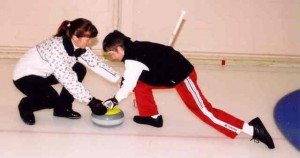Pebbles to Boulders: Find ‘Em and Keep ‘Em, Volunteers
Finding and keeping volunteers is nothing new around curling clubs. As I visit curling clubs, I continuously see examples of the poor recruitment of volunteers. However, it does not have to be that difficult. In the time that I was leading programs, I never had issues of finding and keeping volunteers. Let me tell you how I did it.
Before telling you my method of volunteer recruitment, let’s look at other methods that may not apply to Little Rock programming.
First is the election process. This is where persons place themselves up for service and allow others to determine if they should do the job. While this is a very trusted means to acquire volunteers, as persons are opting in to volunteer, it may not apply to Little Rocks.
Second is begging. Begging is a fine way of telling people you need help, but might not be sending the appropriate message as it could have negative over-tones of problems within the organization and who wants to be part of that. You just might obtain volunteers in this way, but not many.
Third is the bulletin board notice. The notice is an effective way of informing others that assistance is needed, but tends not to be very convincing. In many cases, there is no means which to opt in. If the persons reading the message are keenly interested, they will likely respond and you’ll recruit volunteers.
The last method of volunteer recruitment and the one method, which I have found to be most successful, is the personal approach. Go out face to face to ask people to join your team of volunteers. By doing do so, you are likely to ask trusted people with whom you have confidence to do a good job. By taking the time to ask, you are showing confidence in those who you ask and they will feel honoured that you think they can do a good job.
Underlining any method from which to recruit is to be organized. You have heard this from me before, but if you are not organized, persons do not want to climb aboard a sloppy ship. It makes them look bad… we all want to look good and they do not want to be handed a bunch of problems. I tell you, if you are organized, acceptance of what you are doing comes more easily.
You’ll get more volunteers, by keeping the tasks for which you need help simple and short in nature. Personal time is valuable these days. No one wants to be bogged down with more work with a long list of things to do. If the jobs you have for volunteers are brief, taking of no great time, people will be more accepting by saying, “Sure, I can look after for you.”
If some of the jobs you have are more technical, then offer to supply the proper training. For example, teaching curling requires certain skills to care for curlers properly and minimize risk. Offer to send and pay for (or partially pay for) the volunteer expenses to attend a coaching training course offered in all provinces. These on ice volunteers will feel comfortable in carrying out the duties, for they have been properly trained.
Communications with your committee of volunteers is important. People like to be kept informed and up to date. Not knowing what is going on makes people feel left out. Most people like being part of groups and knowing what the group is doing is part of positive well-being. I found the use and supplying of agendas for up coming activities a very useful tool. Emailing these ahead of the next curling session was very helpful in keeping everyone on the same page.
Once people volunteer, they want to contribute to the success of the program. Make everyone feel wanted. When you ask someone to do a job, then let him or her do it. Let them take charge of that task. Allow volunteers to make decisions. Sometimes you might not like what has been decided, but there is more than one way to obtain results. New and fresh ideas come from trying new things.
Create an environment of enjoyment and fun with your volunteers. If you are happy and positive as you work around the curling club, then others will catch your enthusiasm. Make volunteering a social event. We humans are social by nature. Having a good time draws us together. The less the job feels like work, the easier it is. Consider hosting a backyard barbeque in the off-season that will bring the committee together away from the club.
As harmful it is to over work volunteers, it is just as harmful to under work them. I am aware of a curling club where a longtime ago, a hard working curling chairman collected a bunch of guys together to operate the curling section. The section of the club was very successful as the chairman worked his butt off caring for all the section decisions and chores. After three years the chairman moved on and the rest of the committee were left to operate the section. These guys felt lost and un-informed, as they had not been involved with section business, just to serve as ‘yes men’ to the chairman. The result was that half the committee quit and the other half was left scrambling to pick up the pieces to get ready for the up coming season.
So, when putting together your volunteers, you want to remember to empower them, inform them, train them, do not over work or under work them and let them have fun. You’ll be pleasantly surprised with the resulting success.






